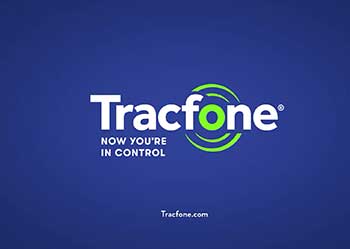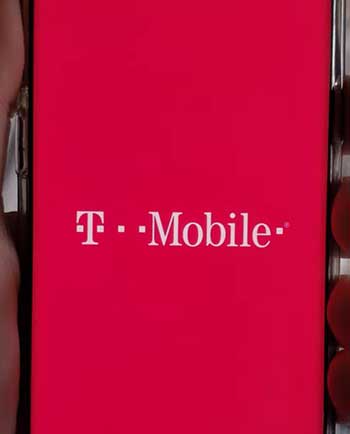When considering prepaid cell phone plans, Tracfone and T-Mobile’s Metro by T-Mobile are two big names that often come up. But how exactly do these pay-as-you-go carriers compare in terms of coverage, phone selection, perks, and overall value?
This comprehensive guide will break down the key similarities and differences between Tracfone and Metro by T-Mobile to help you determine which prepaid carrier may be a better fit.
A Brief Comparison Table
| Feature | Tracfone | Metro by T-Mobile |
| Network | Uses Verizon, AT&T, T-Mobile | T-Mobile only |
| Phone selection | Wide variety from basic to smartphones | Midrange/budget smartphones |
| Plans | Pay-as-you-go, add bundles as needed | Unlimited talk & text, limited high-speed data |
| Perks | Promos for existing customers | Deals for switchers |
| Customer service | Average | Average |
| Best for | Light users, rural areas | Urban users who need data |
Overview Of The Carriers
First, let’s look at the basics of who Tracfone and Metro by T-Mobile are and what they offer:
Tracfone

Tracfone is one of the largest prepaid wireless providers in the U.S. They don’t operate their own cell tower network, instead using Verizon, AT&T, and T-Mobile’s networks to provide coverage.
Tracfone offers basic phones, smartphones, and bring-your-own-device options on flexible no-contract plans.
Metro by T-Mobile
Metro by T-Mobile is the prepaid brand owned and operated by nationwide mobile carrier T-Mobile. It provides service on T-Mobile’s network.
Metro offers affordable smartphone plans with features like unlimited talk, text, and high-speed data. You can bring certain unlocked phones or purchase a device from Metro.
Also Read: Choose the Best Charger and Accessories From UGREEN Or Anker
Comparison Between Tracfone And T-Mobile
Network Coverage and Performance
Tracfone uses Verizon, AT&T, and T-Mobile networks to provide coverage for customers. This gives them extremely wide reach across the country, especially in rural areas covered by Verizon and AT&T. Overall performance is solid though data speeds may be slower at times of peak congestion.
Metro by T-Mobile only runs on T-Mobile’s network. While T-Mobile has greatly expanded coverage in recent years, there are still gaps in rural areas. However, their 5G and LTE speeds deliver excellent performance where service is available.
If your usage is mainly talk and text, Tracfone provides better nationwide coverage. But Metro will have faster data speeds where T-Mobile service is accessible. For urban users, Metro has very competitive coverage and speeds.
Phone Selection and Options

One major advantage of Tracfone is the wide variety of phone options, from basic talk and text devices to newer iPhone and Android models.
You can even bring your own phone in many cases. Tracfone also sells both locked phones with service bundles and unlocked phones without.
Metro by T-Mobile has a more limited selection focused on midrange and budget Android smartphones. You can buy an unlocked phone upfront or pay in monthly installments. iPhones are not offered.
Metro only allows certain T-Mobile compatible phones on its network.
For access to basic phones and the ability to bring your own device, Tracfone offers better flexibility.
But Metro provides excellent smartphone options for the money as part of its plans.
Monthly Plan Rates and Features
Tracfone uses an à la carte model where you only pay for the minutes, texts, and data you need. Prices start at $10 for a 60-minute plan or $20 for 500MB of data.
Smartphone plans for 30-60 days of service cost $20-50. You can add more bundles as needed, which helps limit waste for light users. But costs add up quickly for heavy data users.
Metro by T-Mobile offers unlimited talk and text on all plans. Their $30/month plan includes 2GB high-speed data, $40 for 10GB, $50 for unlimited high-speed data.
Taxes and fees are included, so the monthly cost is predictable. However, throttled data speeds can be quite slow once the monthly cap is reached.
Overall, Metro by T-Mobile offers simpler flat-rate plans while Tracfone allows more pay-as-you-go flexibility at the cost of potentially higher fees for high-usage customers.
Perks and Savings Options
An advantage of Tracfone is the occasional promotions they offer, like triple minutes for life or 1-year service plans at deep discounts. These incentives can help improve the value you get from Tracfone. Keep an eye out for deals on purchasing add-on bundles.
A nice perk of Metro by T-Mobile is they offer a $100 port-in credit if you switch from certain other carriers and port-in your number. This makes it easy to offset the cost of a new phone purchase. Additionally, Metro frequently runs discounted monthly rates for switchers.
For most savings, Tracfone rewards loyal customers while Metro aims to attract switchers. Be sure to compare any current promotions when shopping plans.
Customer Service Reputation
In customer service reviews and ratings, Tracfone earns just slightly lower marks than Metro for things like store support, phone reps, and claims processing time. However, both carriers receive average scores that reflect room for improvement.
Considering the affordable prices, prepaid carriers naturally invest less in customer service compared to postpaid operators. But you can generally get questions answered if issues arise with either Tracfone or Metro. Just manage expectations around response times.
Also Read: Comparison Between UPrinting And PrintRunner.
Frequently Asked Questions (FAQ)
No, Tracfone is a separate prepaid wireless provider that uses Verizon, AT&T, and T-Mobile’s networks. Tracfone has no direct relationship with T-Mobile besides renting coverage. Metro by T-Mobile is the actual prepaid brand owned and operated by T-Mobile.
Potential downsides of Tracfone include slower data speeds due to lower network prioritization, having to purchase airtime bundles frequently, older or more basic phone options, and only average customer service. But you’re also paying lower prices compared to major carriers.
For light to moderate talk and text usage with minimal data needs, Tracfone can be a very good option. The flexibility around custom bundles keeps costs down. But for heavy smartphone users, speeds may be too slow during congestion and the à la carte pricing less of a value.
Yes, Tracfone uses Verizon, AT&T, and T-Mobile networks to provide coverage. When activated, Tracfone phones will connect you to whichever underlying carrier has the best service for your location. Specific models may only be compatible with certain networks.
Also Read: Comparison Between PowerSpec And iBuyPower.
The Bottom Line
For prepaid wireless on the T-Mobile network, Metro by T-Mobile provides excellent speeds and urban coverage at reasonable flat rates. But Tracfone offers greater flexibility, wider compatibility, basic phone options, and potential savings for light users.
Evaluate your coverage needs, device preferences, data usage, and budget. This will make clear which carrier aligns better with your mobile requirements. And don’t forget to shop any new customer promotions available.
Going prepaid often provides significant savings over major postpaid operators. With Tracfone or Metro by T-Mobile, you can enjoy wireless service at an affordable price without contracts or commitment.
Take your time researching to determine the best prepaid option for your situation.
